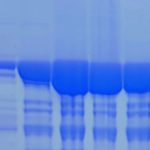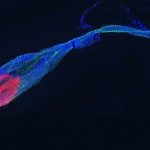Lien vers Pubmed [PMID] – 39993224
Lien vers HAL – pasteur-05051723
Lien DOI – 10.1093/ismejo/wraf035
ISME J 2025 Jan; 19(1):
Wax esters (WE) are fatty acid-based neutral lipids thought to be restricted to bacteria and eukaryotes, playing a key role in the functioning and maintenance of cells, especially under adverse conditions. Here, we show that several halophilic archaea (Halobacteriales) carry a homolog of the bacterial wax synthase gene. WE synthesis and accumulation are demonstrated in one of these (poly)extremophilic archaea, Natronomonas pharaonis, during growth on long-chain fatty acids. Our bioinformatic analysis also shows that the synthesis of fatty alcohols required for WE synthesis could be performed by an enzyme evolutionarily related to Class-I 3-hydroxy-3-methylglutaryl-coenzyme A (HMG-CoA) reductase (HMGR, classically involved in the isoprenoid biosynthesis pathway). Using heterologous expression and enzymatic assays, we show that this HMGR homolog, which we named FcrA (for fatty acyl-CoA reductase), reduces fatty acyl-CoA to fatty alcohol but cannot reduce HMG-CoA to mevalonate, contrasting with the canonical HMGR. The conservation of HMGR catalytic residues in FcrA suggests that the two enzymes have a similar catalytic mechanism, whereas an elongated substrate-binding pocket and distinct residues may explain FcrA’s selectivity for fatty acyl-CoA. In addition to archaea, FcrA is present in a wide range of bacteria, including ~25% of those predicted to produce WEs, and accounts for a large proportion of the fatty acyl-CoA reductases found in various environments. Challenging the long-held paradigm that archaea cannot biosynthesize fatty acid-based neutral lipids de novo, this study lays the foundation for further physiological, ecological, and biotechnological investigations of neutral lipid production by systems markedly different from those of eukaryotes and bacteria.











